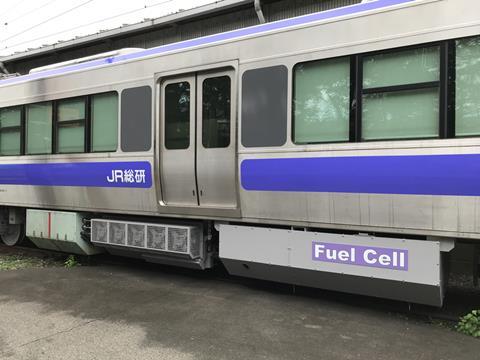
- The Railway Technical Research Institute uses hydrogen energy to save energy.
- Development of a fuel cell hybrid train as a railway vehicle suitable for the next generation that contributes to reducing environmental impact.
The RTRI recently announced that it has started testing of a a prototype multiple-unit fuel cell hybrid train. The test train which has 1.5 times higher power and higher starting acceleration was tested on August 29th and 30th.
Major features of this new train
・ Fuel cells have increased output by 50% due to higher output density and distributed arrangement of cooling devices. Reduced volume by 20%
・ The fuel cell power converter uses SiC (silicon carbide) elements and small circuit breakers to reduce the volume by 45%.
As a result, the new test trains should contribute to the future introduction of fuel cell trains by railway operators.
Outline of new fuel cell hybrid test train
 This time around, the fuel cell hybrid test train has been completed by reducing the size and performance of the installed equipment and increasing the startup acceleration.
This time around, the fuel cell hybrid test train has been completed by reducing the size and performance of the installed equipment and increasing the startup acceleration.Two polymer electrolyte fuel cells are contained in an underfloor module 2 600 mm long, 2 655 mm wide and 720 mm high, which weighs 1·9 tonnes. Hydrogen is stored in four high pressure cylinders at 35 MPa, with a capacity of 180 litres, giving a range of 72 km.
The two fuel cells can each produce a maximum of 90 kW at 200 V to 350 V, which is converted up to 700 V to feed the three storage batteries. This in turn is stepped up to match the 1·5 kV DC that is drawn from the overhead line.
The four 95 kW traction motors provide a maximum acceleration of 0·7 m/s2, and an electric braking rate of 0·86 m/s2.
Part of this development was carried out with a subsidy for railway technology development expenses from the Ministry of Land, Infrastructure, Transport and Tourism
Source: RTRI
Read the most up to date Fuel Cell and Hydrogen Industry news at FuelCellsWorks




